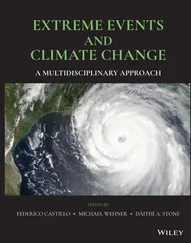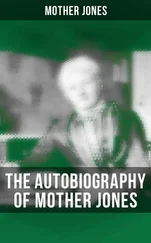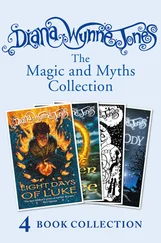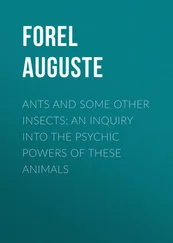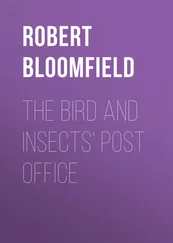Measuring lanky insects is fraught with difficulties, and this could have been the point at which some controversy arose. Most size measurements for insects deliberately ignore legs, antennae, tails and snouts because they vary tremendously within a population, especially between male and female of the same species. It has long been known that the leg lengths of stick insects vary, even when measured on different sides of the same specimen. However, the matter was settled in October 2008, with the description of a new species of stick insect from the Malaysian state of Sabah on the island of Borneo. Phobaeticus chani was named after the entomologist Datuk Chan Chew Lun, who donated the largest of three specimens, found by a local collector, to the Natural History Museum in London. With a body length of 357 mm (14 in) and a total length of 566 mm (22.3 in), it takes the record no matter which way it is measured.
| NAME |
Ghost beetlesin the genus Cyphochilus |
| LOCATION |
Southeast Asia |
| ATTRIBUTE |
the whitest covering of any insect |
White is not a common insect colour, as it makes an insect stand out to predators in a natural world dominated by browns and greens. Perhaps the best-known white insects are cabbage whites (Pieris species). Like other butterflies, they use their colour patterns to recognise each other when mating. But they fade into insignificance against ghost beetles in the genus Cyphochilus.
Ghost beetles are found throughout Southeast Asia, where they are sometimes regarded as a pest in sugar cane plantations. Ghost beetle larvae feed in fungi, and the beetles’ whiteness is thought to be a camouflage against this rare white foodstuff. On close examination, the whiteness is caused not by the beetle’s exoskeleton (its tough outer shelllike body), which is dark brown and almost black, but by a dusty coating of pure white overlapping scales, which cover its body, head and legs. Each scale is minute, measuring only 250 by 100 μm and just 5 μm thick (a μm or micrometre is one thousandth of a millimetre).
The scales were first studied by Pete Vukusic, an optical physicist at Exeter University in the UK, who discovered that the beetles’ whiteness is caused by a random network of tiny filaments, 0.25 μm in diameter, inside the scale. The random arrangement of the filaments means that the different rainbow colours in natural white light are scattered simultaneously, equally and highly efficiently, with no single colour predominating. The beetles are among the whitest objects found in nature – much whiter than teeth and milk.
| NAME |
golden chafersin the genus Plusiotis |
| LOCATION |
Central and South America |
| ATTRIBUTE |
appear to be wrought from burnished gold and silver |
Insect colours serve many purposes. Greens and browns act as camouflage against living and dead leaves, tree trunks, branches and twigs. Bright yellow, orange and red, often marked with black, warn that an individual is poisonous or might sting. But the brightest and most spectacular colours do neither. Metallic glints of bronze, blue, green, red and violet occur in many beetles, bees, wasps, flies and, of course, butterflies (see page 48). The most astonishing of these are the brilliantly shining golden chafers, Plusiotis species, of Central and South America.
Metallic sheens are not colours in the conventional sense of a pigment or colourant on the surface of the animal. The red of a ladybird, for instance, appears because the yellow, green and blue wavelengths in sunlight are absorbed and only red light reflects back into the eye of the beholder. The metallic shine of the golden chafers, by contrast, is caused by the white sunlight being broken, much as it is when shining through a diamond, to give a series of rainbow glints.
Seen through an electron microscope, the surface of the beetle is revealed to be covered with minute parallel grooves. These reflect certain portions of the light at the precise angle to shine like polished metal, while absorbing and scattering other wavelengths.
Shining colours are not just for showing off to a potential mate, although this is important for many butterflies. One of the main purposes, ironically, may be to avoid attention. In bright sunlight, against wet mud or in the dripping rainforest canopy, metallic glints are surprisingly confusing to the eye of a predator, which searches for images based on shape.
| NAME |
fungus gnat larvaein the family Keroplatidae |
| LOCATION |
worldwide |
| ATTRIBUTE |
create mucus webs to collect their food |
Contrary to popular opinion, insects (like snakes) are not slimy. Slime or, to give it its more technical term, mucus, is a sticky secretion used especially by molluscs and vertebrates. Snails and slugs use it to lubricate their path as they glide forwards on their own moist layer, and to a certain extent as a defence, since the stickiness deters predators, which can get gummed up in it. Vertebrates use it to line their airways, guts and genital tract, and to cover their eyes, where it forms a gel layer in which antiseptic enzymes can protect against microbial attack. Mucus is a very sticky substance, and very useful, so it will come as no surprise to learn that some insects use it after all.
Mucus is made up of mucin molecules – a number of long protein chains covered with atomic groups which resemble sugar molecules. The sugar parts (glycans) attract water (and each other) and as the long mucin molecules slide past one another, these areas act like weak glue, partly sticking the strands together. The mucus remains wet and tacky, and does not set hard like that other important long-chain protein molecule, silk, which is produced from the salivary glands of many insect larvae, which use it to spin a cocoon in which to become adult.
Fungus gnat larvae produce mucus from their salivary glands, but they do this throughout their larvahood, not just during metamorphosis at the end. The larvae of these small midge-like flies live under dead logs, fungal fruiting bodies or in caves. Here they build a rough sheet web of sticky mucus strands, covered all over in tiny water droplets. Sometimes they add a soft flexible tube into which they retreat for shelter. Many species eat highly nutritious fungal spores. The spores are impossible to catch when airborne but are caught in the gleaming mucus, and can then be eaten. The webs of some species also contain oxalic acid, a simple chemical similar to vinegar but much more powerful. It is highly toxic to many animals (including humans), and the gnat larvae use it to kill insect prey, which they then eat too.
| NAME |
carpenter ants Colobopsis truncatus (and other species) |
| LOCATION |
worldwide |
| ABILITY |
uses its head as a living gate at the entrance to its burrow |
Ants gain protection from a complex social hierarchy that generates workers to forage and build, and soldiers to fight and protect. The nest that they build and protect is the ants’ most important asset. Ants need to protect their nest from many enemies, including predators, parasites and other ants who would like to raid the valuable protein invested in the brood as well as any food stores laid up against hard times.
Читать дальше





